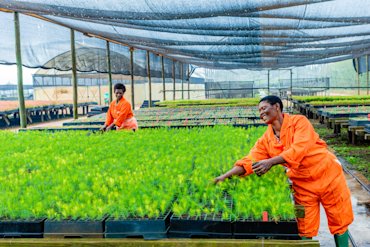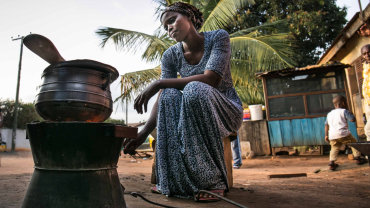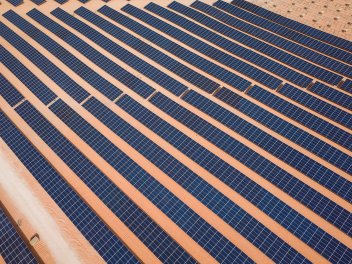Behind the scenes: How do we pick our climate projects?
At Klima, we set out to find effective, sustainable, and verified climate projects to help you offset your carbon footprint. But how do we choose the most effective projects out there? Let's dive in.
From the very beginning of our journey at Klima, our team has worked tirelessly to make sure our members are proud of how they offset their footprints. It’s been just over three months since the Klima app launched, and we couldn’t be happier to see how big of an impact our projects are creating. So how did we choose the best projects out there, and where are we looking next?

Setting smart criteria to pick the best climate projects
In 2020, after months of research and long conversations, our team sat down with one goal in mind: make sure our community can always be proud of the projects they support with Klima. We defined three criteria that would guide our project selection process along the way and ensure we stay true to our core values:
First, all our projects must be effective: Not only do their approaches achieve top ranking on Project Drawdown’s quintessential list of climate solutions for their capacity to reduce and capture CO2e, but they also create value for both the environment and the local community. With this in mind, we decided to only work with partners with a proven track record. For example, our tree-planting project in Panama has been running for 30 years, has planted 9.2 million trees, and has created habitats for more than 15 endangered or vulnerable animal species.
Each offsetting project is verified by a trustworthy, independent third party. Verification maximizes impact and transparency by measuring and monitoring the project benefits for the local ecosystem and community. All of our projects are verified by the Gold Standard or Verified Carbon Standard, widely acknowledged as the most rigorous verification measures out there. Furthermore (nerd alert!), these standards guarantee the“additionality" of each project. That means it would not exist without the financing through carbon offsets. That way you can be sure that your funds truly make a difference in the world.
And last but not least, all of Klima’s projects are sustainable. This means they involve local communities to ensure people, the environment, and future generations benefit from the impact created in the long-run. In fact, all our projects provide at least four specific benefits under the UN Sustainable Development Goals. What does this look like in practice? Let’s take our reforestation project in Tanzania. The project located in the remote highland districts of Uchindile and Mapanda has brought school teachers, medical infrastructure, wells, and even a women entrepreneurship program to the region. All these initiatives are decided upon by the local village councils based on what is most needed.
Every offsetting project we partner with meets this list of criteria, so you can be assured your offsetting subscription is hard at work. But defining these criteria didn’t happen overnight.

The initial project research — what we learned
Picking the best climate projects was a challenging but extremely valuable process. At the beginning of 2020, we had our heads down researching climate projects, talking to project developers, and diving deep into the nitty-gritty logistics of carbon offsetting.
We wanted to focus on three overarching impact areas from the very start: nature, tech, and social impact solutions, because we believe all of them are needed if we want to create a climate just world. But there are many projects that fit those buckets. One of the options we originally considered was to include Direct Air Capture technology, but we soon realized this method was simply too immature and expensive to qualify as effective, and its long term prospects are still unproven.
Conversely, we were stunned to learn about the immense climate potential of clean cookstoves. 40% of the world's population cooks their meals over open fire. That means three billion people can only have a warm meal if trees get chopped down, every day. It’s a no brainer that distributing clean stoves efficiently fights forest loss by reducing demand. But what really made this concept stand out to us are the social and health benefits: Less open fires means fewer toxic fumes in homes, which are currently the cause of four million premature deaths worldwide.

These are just two examples of many pros and cons we weighed when curating Klima’s project portfolio and quality criteria. Ultimately we decided to go with well-established and proven climate solutions, keeping an eye on cost-effectiveness to assure affordability, while making sure each project provides additional benefits to people and the environment. That’s how we landed on our current project mix of tree-planting, solar power, and clean cookstoves. You can read more about each individual project here.
Looking ahead — the value we strive to create
Curating a holistic offset selection is certainly at Klima's core. We know that without the right information, choosing the right offsetting service can be overwhelming. It's easy to get stuck between information overload, overly expensive climate projects, and those that lack proof and external validation. That's why we are transparent about our own thought process and guiding principles, so you can decide if these principles align with yours. If so, we’re happy to report that we already did the work for you.
What's next? We aim for long-term partnerships, so right now in we're in conversations with each of our partners on how to best expand on our existing collaborations. At the same time, we are constantly on the look out for new partners, project types, and innovations as we grow. There’s a lot of exciting things happening in the offsetting space and we want to make sure that we fully tap into the most effective opportunities to make a difference for the climate. Of course, our members will be the first to know when a new project comes into play.
After all, with the right projects, together we can take millions of tons of CO2e out of the atmosphere and improve lives along the way.



